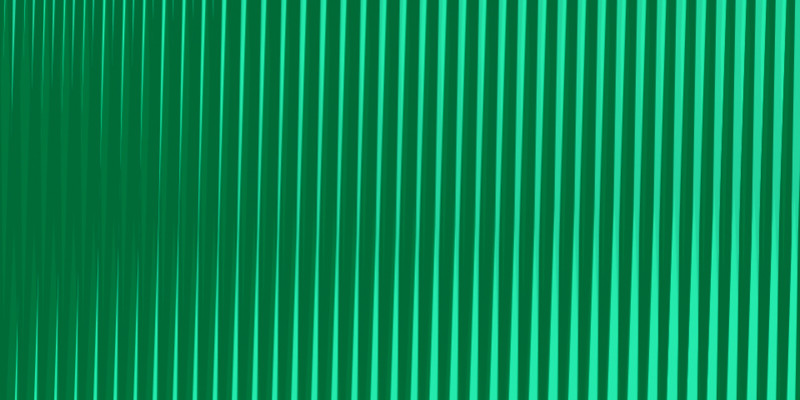Diagram for invisibility
Abstract
This article aims to elucidate the nature of the relation whereby an individual is engaged in a situation with regards to sound-based works of art. A sound-based work is here considered as a site of interaction between sonic and non-sonic elements, and could be said to set a frame for a particular relation between the constituent material elements, but also between the situation and the person engaging with it. As an entry point to contemplating this relational aspect, the article explores the notion of the diagram as suggested by Michel Foucault as a way to unfold what could be termed the affective potential of given spatial or medial circumstances. Based on the notion of the diagram, the article suggests a “diagrammatic” reading of the notion of the acousmatic, where an experiential tension unfolds based on what can be seen and what cannot, in relation to what is heard. Suggesting ways forward, the article proposes how one can find the diagrammatic dynamic inherent in artworks by Marcel Duchamp, Robert Morris and Janet Cardiff.
Introduction
Artistic works that include sound have often been discussed with regard to the particular nature of the sonic element. From this perspective, a sound-based art is considered in relation to a set of ontological questions with emphasis on sound. However, one might also consider sound as something integral to a particular situation. Considered as a site of interaction between sonic and non-sonic elements, the work could be said to set a frame for a particular relation between the constituent material elements, but also between the situation and the person engaging with it. In so doing, the works render upon themselves an aspect of sonic experience that is remarkably difficult to account for:
The act of listening does not happen in an empty space by a neutral, unbiased recipient. The significance of the audible is conditioned by a particular set of circumstances unique to a given situation. Thus the significance of a sonic event cannot be reduced to the properties of an audible object as something in itself. The significance of the particular sensorial information, and how this information is understood in conjunction with other information (i.e. between what is heard and what is seen) is dependent on a relation between the individual and her environment.
A given artwork might relate to this issue in various ways. For example, in a “standard” concert situation, a work unfolds against the backdrop of certain conventions and expectations. The central significance of the sonic musical event is presupposed. The audience is already “in its place” before the work begins.
In other situations the significance of the sensorial information and the interrelation between, for example, sonic and non-sonic elements and between audience and work may be less apparent. Nonetheless, the logic of how the audience involves itself in the work, must in a way be an integral part of the work.
The following attempts to address this aspect. The overarching idea pursued here is that the relationship between an individual and her environment is guided by a structural principle. Within a phenomenological tradition, this aspect has been addressed theoretically from various positions. Merleau-Ponty’s notion of the structure of behaviour may be cited as something developed by the individual in accordance with the nature of the environment; the notion of ecology in James J. Gibson’s “ecological” approach to perception, is another example (Gibson, 2014).
In the current article, I will propose the idea that this principle can be understood as a diagram, as implied by Michel Foucault following his well-known analysis of a panopticon. While Foucault’s analysis is intended to elucidate how circumstances determine the behaviour of the individual with regard to a certain organisation of power, the notion of the diagram in the current article will be explored with a more general frame in mind: a diagram of a given situation maps out an underlying functional principle of how particular circumstances affects the individual and her behaviour, encoding sensorial information.
According to this rationale, auditory perception must be understood with regard to the underlying diagrammatic relationship that implies how the listener potentially relates to her environment or elements within it. An artistic practice involving sound could be seen as an investigation of how to establish circumstances for this relationship to unfold. As an entry point to this, I will briefly outline Michel Chion’s analysis of a range of experiential effects enabled by an inherent audio-visual ‘contract’ in a standardised film-format. I will further suggest a ‘diagrammatic’ reading of the notion of the acousmatic that could be applied in a wider range of art-works. Finally, I will suggest that artworks may be found in which the diagrammatic aspect of how an audience is engaged in a work becomes a theme of the work itself.
Michel Chion and the audiovisual relation in cinema
As an example of an analysis of experiential effects within a given format, I will briefly attend to Michel Chion’s analysis of sound in cinema.
The experience of sound always entails something other and more than what is seen. Normally this causes no experiential conflicts. As Merleau-Ponty notes, the human experience is synesthetic by nature and can not be reduced to what is experienced with a single sense (Merleau-Ponty, 1945, 368). What is seen and what is heard are characterised and differentiated by their individual properties and thus play different roles in one’s total experience. However, the unified experience is rooted in the same surroundings and as such there is also a strong intuition of their shared cause.
Nonetheless, situations can be generated in which there is a notable absence at the point of convergence of the visible and the audible. There are situations where the cause related to what is heard is outside the frames of the visible, and there are situations where the experienced reality of what is heard and what is seen do not coincide.
In a number of publications, the French composer and theorist Michel Chion analyses such phenomena as they appear within films. Since its introduction in 1927, the commercially distributed sound-film format is characterised by an implied ambition of simulating the synesthetic experience through a combination and synchronisation of individually recorded audio and visual images. In spite of this ambition to construct an audio-visual realism through synchronised audio and image, occasional ‘holes’ occur when sound and image do not add up. Building his argument on analysis of films by, for example, Alfred Hitchcock, Fritz Lang and Stanley Kubrick, Chion suggests that the effect of the momentary de-synchronisation is not a breakdown of the experienced realism. Rather, the de-synchronised sound indicates an element that is ‘hidden’ in, or located outside, the visible image. In this way, visible space is augmented with an imaginary space, while at the same time introducing an element of suspense within the narrative regarding the threshold of the visible and what could potentially be visible.
According to Chion, the de-synchronisation of auditory and visual elements were integrated into cinema’s inventory of filmic effects. But rather than being refined as part of a vocabulary of a sophisticated rhetoric, the effect remains within the frame of a more elementary play between when something is visible or invisible. The effect therefore is essentially different from what was framed with the idea of an audiovisual counterpoint, as was for example suggested by Eisenstein, Pudovkin and Alexandrov in their contemplation of the aesthetic potential of sound in cinema (Chion, 2009, 208)
It is not my errand here to go further into Chion’s analysis. What is interesting to note with regards to Chion’s analysis is how the format serves as a particular context for the sensorially based experience. The film format presumes a relation between an audience and what is experienced. On the audience side there is, as Chion notes, an “audio-visual contract” underlying the experienced audio-visual unity (Chion, 1994). In a wider sense, the format presumes a relation between an audience, a producer of the film and the actual situation in a cinema-space or in front of a TV in a living room where the experience unfolds. The individual audience is not a neutral instance that perceives the projected image and sound. The experience is made possible due to the circumstances and conventions specific to the format – both medial and spatial.1
The effect that Chion finds in the de-synchronisation (and resynchronisation) of the visible and the audible leading to an opening of an “invisible” space is dependent on a certain regulated context for the sensorial experience. The effect is related to particular conventions for how a space is represented technically and technologically and a context for a viewing (and listening) situation, i.e. the cinema.
The diagram
As such, there is an underlying principle that sets the frame for how to understand what can be seen and what cannot. In order to elaborate on this aspect, I will refer to the notion of the diagram that Michel Foucault suggests as part of his elaboration on Jeremy Bentham’s idea of the panopticon as depicted in Discipline and Punish. More specifically I will follow architectural theorist Sanford Kwinter’s reading of Foucault in the first chapter of his book Architectures of time.
As is well known, the panopticon is an architectural idea for a correctional facility. The key to the effect of the spatial model developed by Bentham is the installation of an invisible but potentially omnipresent gaze in an architectural frame. The result is that the individual inhabiting the space feels herself constantly watched. This sentiment serves as motivation to behave as if she was watched even if the actual source of power remains unseen. The idea of an omnipresent yet invisible authority can be considered as a general metaphor for how the individual is always affected or even that the process of individuation is dependent on the circumstances. It also implies that whatever is experienced must be understood against a particular context. Foucault suggests that the principle that regulates the behaviour of the individual that can be abstracted from the panopticon can be summoned in the notion of a diagram. (Foucault, 1991, 205)2 The diagram depicts the functional mechanism based on a rationalisation of space that pre-scripts a correct behaviour against an unwanted one. It is a functional principle that ties the individual to her environment and thereby encodes whatever is sensorially perceived in the light of a relational order.
Obviously, the Foucauldian analysis is instrumental in a greater critical venture against existing power-structures. However as architectural theorist Sanford Kwinter suggests, the method has potential in a wider application also in terms of alternative strategies (Kwinter, 2001, 15)
The real benefit of this approach is that it lends itself to an understanding of surroundings not in terms of objects and fixed structures but rather in terms of their affectual potential (ibid 19). Following this, Kwinter proposes thinking of architecture (or architectural objects) as defined by its potential to affect behaviour rather than by its formal structure (as buildings). Kwinter’s account suggests that a relational space could be considered as a dynamic system structured according to attractors. In the light of this reading, the diagram is understood as the map of a distribution of affectual potential in an environment.3
Thus Kwinter’s reading embraces the complexity governing a given situation and thereby opens up for a general model of the interplay between individual and environment.
It is following this line of thought that the notion of the diagram is relevant for the discussion in the current article. One can consider the diagram as a model of a given relational pattern that encourages certain behaviour and establishes a backdrop for what is sensorially perceived - for example, how what is sensorially present relates to what is sensorially absent in a particular situation.
The acousmatic considered as a diagram
An interesting case of how the presence of the invisible encodes the sensorial can be found in the discussion of the acousmatic. In Michel Chion’s analysis of the effect of the invisible within the film format, the notion of the acousmatic is used to describe the experienced tension of what happens when what is visible does not coincide with the audible. The notion of the acousmatic is inevitably tied to an elaborate discussion of its reception (see Brian Kane’s extensive account of this i.e. Kane, 2014). The historical anchor-point is Pierre Schaeffer’s development of a theoretical background for a musique concrète based on an acousmatic technology and an associated mode of listening (Schaeffer, 1966). This discussion tends to focus on the implied phenomenological account for auditory perception and to what extent a ‘pure’, transcendent and trans-historical auditory object is a valid category. It is beyond the scope of the current article to contribute to this. Instead I will explore a different aspect of what is understood as an acousmatic situation. I will revisit Schaeffer’s often cited historical point of reference: the account of Pythagoras giving lectures to (some of) his students from behind a curtain. Allegedly the situation helped the students focus their attention on what was spoken rather than on the circumstances surrounding it. The curtain was a device that helped guide the listener’s attention by veiling the potentially distracting visible source of the voice.
One can only guess what effect the situation actually had on the listening students. This article has no intention of concluding anything regarding this. Following the discussion above, an immediate observation is the resemblance between the pythagorean proto-acousmatic and the panoptic situation. The relation between students and teacher manifests itself in its prescription of a particular behaviour rationalised by a scenographic (or technological) device. Beyond the symbolic division of the space, the veiling of the speaker in the situation potentially also amplifies an existing power-relation as the real properties of the one speaking remains unclear to the one listening.4
From this attempt at a ‘diagrammatic’ reading of the acousmatic, it is clear that the potential effect of acousmatic circumstances extends beyond the encoding of sensorial information within a given context. The situation will potentially affect the individual’s understanding of the relation between her and the environment. As such the acousmatic situation is open for a double interpretation: on the one hand it serves as circumstances for an aesthetic effect triggered through a guiding of a perceptual behaviour away from the circumstances and towards the audible aspect of experience. This is the effect that Schaeffer observes upon listening to a recorded sound apparently dissociated from its cause or source. On the other hand, the situation frames an understanding of what is heard relative to particular circumstances. The lack of clarity introduced through the acousmatic veil potentially opens towards an imaginary space, associated to the auditory phenomenon and finally to the spatial circumstances that are the background for its occurrence. The experiential effects following this is what Chion accounts for in his analysis of the interplay between invisible but audible and the visible in the cinema.
Within an artistic context, one could suggest that the transparency of the diagrammatic aspect of a situation is a matter of degree. As Kane notes, regarding the acousmatic situation, there is a tendency for the technique to slip into the background of an experienced sonic phenomena (Kane, 2010). However, one also finds artistic strategies where the diagrammatic aspect of the work – how the established situation engages the perceiver – is put into play on a thematic level. In the following I will suggest three examples.
Noisy secrets
One example of this could be Marcel Duchamp’s so-called “assisted readymade” À bruit secret from 1916. The readymade object consists of two brass plates fixed over a hollow twine of string with four long brass screws. Before sealing the ball of twine with the screws Duchamp’s friend and beneficiary Walter Arensberg put a small object into the hollow core of the ball of twine without telling Duchamp what it was. When shaken the secret object will rattle. In Duchamp’s account:
Before I finished it Arensberg put something inside the ball of twine, and never told me what it was, and I didn't want to know. It was a sort of secret between us, and it makes noise, so we called this a Ready-made with a hidden noise. Listen to it. I don't know; I will never know whether it is a diamond or a coin” (Sanouillet, 1975, 135)
One can find a number of possible interpretations of Duchamp’s work.5 However, from the perspective of the current article there is a particular logic to the object that calls for attention. The key to this is found in a sequence of letters and periods that is inscribed on the top and bottom plate of the object. These signs that can not immediately be translated to a linguistic message adds up to a kind of riddle. As Duchamp explains in a letter to Arturo Schwarz, this element is an exercise in comparative orthography (English-French). The periods must be replaced (with one exception: Debarrasse [e]) by one of the two letters of the other two lines, but in the same vertical as the period – French and English are mixed and make no ’sense.’ The three arrows indicate the continuity of the line from the lower plate to the other [upper] still without meaning. (Schwarz, 1969, 462)
In order to ‘solve’ the orthographic exercise by combining and juxtaposing information on the object’s top and bottom, one has to flip the object, thereby making the hidden object rattle inside. In the attempt to solve the textual riddle, another acousmatic riddle - regarding the nature of its hidden inside - is activated. As such, the work can be considered as a conceptual machine encouraging particular modes of reading the object each of which interfere with one another. The noise of the object gains its significance in relation to the impossible attempt to solve or ‘read’ the external features of the object. The diagram in this situation is the way the object sets the circumstances for how to engage with it. It invites a particular mode of perceptual interaction.
A similar diagrammatic logic applies to Robert Morris’ Box with the sound of its own making first presented in 1961. The work, which was conceived with inspiration from Duchamp, amongst others (Krauss, 1994, 104), consists of a cherry-wooden cube displayed on a stand. The box also works as a kind of speaker-box with a hidden loudspeaker through which one can hear a three and-a-half-hour long recording of the sound of Morris manufacturing the very same box. Through this design an experiential tension is established between the visually present box and the audible activities related to the box. This tension can be conceptualised as a kind of de-synchronisation of the sensorial, perceived elements related to the box in a similar fashion as Chion depicts in relation to the audio-visual aspects of the film or as Brandon LaBelle describes it, a doubling of the presence.
In this regard, Morris’s Box … is really two boxes: the one presented in front of me as a finished and stable material fabrication, and the other as the continual replaying of its building, as recording buried inside the other. Therefore, perception oscillates between the two, left to wander through the divide created by presence and its reproducibility, between the ”bodily real” and ”reproduction authenticated by the object. (LaBelle, 2006, 83)
Just as the noise in Duchamp’s readymade, the sonic element of Morris’ box appears as an interference with an “understanding” of the object from a single perspective.6 Rather the work gives rise to an experienced tension in the suspension of the object between the two perspectives. Thereby attention is led to the particular relation of how one engages with it. This attention to how one sensorially engages with an object applies to both Duchamp’s and Morris’ works. They can both be considered as examples of a kind of acousmatic object defined by an experienced tension following the fact that something is occluded, where the tension is what constitutes the identity of the object.
Speakers
The diagrammatic aspect of the work is further prominent in situations where the functional aspect of audio-technology is an integral part of the work’s conceptual rational. The reading of the acousmatic situation suggested above opens for an understanding of this aspect. Through the acousmatic technique or technology a relational chain is established between the listener engaging in the situation and something hidden. The interplay between the listener and the circumstances can unfold in various ways.
An illustrative example of the effect is found in Janet Cardiff’s 40 Part Motet (2001). Cardiff’s works are often characterised by a certain dramatic or theatrical effect, established through the presence of audio-technology, for example in her ongoing series of audio-walks or large-scale installations often co-created with George Miller Burens.
In the installation 40 Part Motet, a performance of Thomas Tallis’ choir work Spem in Alium from 1573 is heard over 40 loudspeakers organised in the shape of an oval with 5 groups of 8 speakers.
In the work the installed uniform black speaker boxes play a significant role. The speakers are mounted on stands at the height of a human body and each speaker transmits the sound of a single voice in the choir. The individual mounted speaker thus acquire rudimentary sculptural qualities. Following these strong anthropomorphic connotations each speaker-box reads as an indexical sign of the absent body of the transmitted voice. This absence appears in contrast to the immediate presence and clarity of the audible voice emanating from the speakers. Overall the experience of the transmitted voice begs R. Murray Schafer’s term “schizophonic”.7
From an audience perspective, the spatial layout of the installation allows the listener to explore the sonic work by moving between the speakers and to shift listening perspectives i.e. by listening to the voices of the choir from a distance, or by putting one’s ear close to a single speaker.
As such, Cardiff’s work can be considered an acousmatic re-staging of the choir work that opens for a unique listening space established through the presence of electroacoustic technology. In this situation the acousmatic tension invites for a particular exploratory listening behaviour by the audience made possible in the absence of the choir.
Just as the experiential tension is a defining aspect of Duchamp’s and Morris’ objects, the staged situation in Cardiff’s work is characterised by a notable absence, while at the same creating the conditions for a particular mode of listening.
The diagrammatic level of the work thus takes the form of an invitation to explore the transmitted sonic material in a certain way. Further it places the audible in relation to a particular spatial and medial context that creates the conditions for the exploration while retaining the tension.
Conclusion
Beyond the qualitative aspects of given sonic phenomena, an artistic work with sound also entails the frame and conditions for how a perceiver engages with it. While far from fully covering the issues raised, it has been the aim of the current article to open for a reflection on this aspect.
First of all, one finds a series of questions regarding what role the circumstances play within a given work. In standardised circumstances, i.e. in a concert situation or a film screening, the conditions allow for a focus on the qualitative aspects of the film or the music while the conditions themselves are mere backdrop. Yet as Chion’s analysis shows certain experiential effects such as the acousmatic relies on the frames of a standardised format. In other situations, the work itself might foreground this aspect. Duchamp’s, Morris’ and Cardiff’s works were presented in an attempt to suggest this.
Secondly, a different question regards how one can account for this functional aspect of the work. The current article suggests the notion of the diagram as a structural principle for how sensorial qualities are encoded within a given situation. Doubtless one can imagine a diagram unfold in numerous ways as well as various types of diagrams. This article has considered the functional aspect of an acousmatic situation as a particular kind of diagram that serves as a way of encoding the significance of a sonic phenomenon in relation to a particular set of circumstances where something is hidden.
Obviously there are substantial functional differences between how an audience is engaged in the case of a person speaking from behind a curtain, as opposed to the case of a recording of an activity heard at a later time, and further to what extent the affectual potential is determined on historical circumstances.
The diagrammatic aspect of a situation is something that can be subject to manipulation and variation. It can give rise to an experienced tension and an attention to the circumstances for the audience interaction.
An interesting perspective of the current reflection is that the notion of the diagram could elucidate how sonic experience is dependent on the particular relationship between sound and non-sonic circumstances. Prominent positions in the current discussions of sound art have promoted the idea of a sonic materiality as something beyond the frame of human perception and suggested an aesthetic potential based on the transgression of the threshold of human perception. In this article, the attempt has been slightly different. It has been the aim to consider a sound-based art with regards to the particular relation between individual and surroundings. Potentially sound based artworks can be an entry to an understanding of how this aspect functions.
- 1. Chion’s reflections regarding the voice in cinema (Chion 1999) uses the historical transition from silent (or “mute” as he suggest) film to talking films as a device to highlight how the conventions of a particular mode of presentation is established within the film format and how this new format enables particular effects.
- 2. Obviously this understanding of the diagram differs from i.e. a Peircian definition of a diagram as particular kind of sign.
- 3. Beyond the immediate point of reference in Gilles Deleuze’s philosophy, there are affinities between Kwinter’s notion of an architectural object and what Michel Serres (and later Bruno Latour) denotes as the quasi-object (Serres, 2007).
- 4. As Dörte Zbikowski notes, Bentham also considered auditory surveillance as part of the correctional facility, but abandoned the idea of installing tubes to monitor prisoners due to the fact that sound would flow both ways (Zbikowski, 2002). See also Szendy, 2007. Within the current perspective, the resemblance is less about whether one can transfer the model from a system of visual to auditory surveillance but rather that the effect ascribed to the situation in both cases is based on the presence of someone (or something) invisible, thereby provoking an imaginary space due to a lack of clarity. As mentioned, this is also the effect that Michel Chion analyses with regard to the voice in cinema (Chion 1999), i.e. HAL in 2001, the mother in Psycho and, perhaps most illustratively, the Wizard in the Wizard of Oz.
- 5. Claudia Tittel, for example, who suggests that the staging of the hidden noise points to a notion of immateriality found on different levels : 1. the sound as something immaterial, 2. The artist’s immaterial, conceptual idea, 3 the viewer’s immaterial imagined images and sounds. (Tittel 2008, 164)
- 6. In Morris’ own writing, this tension is found in contrasting a formal and informal (processual) aspect of the object (Morris, 1968).
- 7. Schafer’s dramatic term obviously suggests a violent separation of the sound from its bodily origin. Schizophonia is related to a sense of unease when modern media-technologies such as the telephone or the phonograph give rise to phenomena that challenge a naïve sense of spatio-temporal causality. In an insightful reflection, Steven Connor suggests that the aesthetication of a schizophonic voice in works today might in fact be less about this modern-era experience and rather entail “something like a vague longing for the unease that we once felt, or that we feel we ought once to have felt.”(Connor, 2012, 5).




